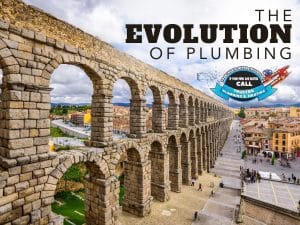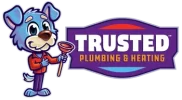
Humble Beginnings
The roots of plumbing stretch deep into history, reaching back to ancient civilizations. They used clay pipes and sewage systems, a testament to their advanced understanding of sanitation.
In Rome, aqueducts brought fresh water from distant sources into the city, and an intricate network of lead pipes distributed it to homes and public buildings. Romans also developed sophisticated sewage systems, complete with public toilets and drains, promoting better hygiene and sanitation.
The Middle Ages: A Plumbing Regression
With the fall of the Roman Empire came a decline in plumbing systems across Europe. The intricate knowledge of aqueducts and sewage systems seemed lost, and public health deteriorated. People often relied on communal wells and streams, which led to waterborne diseases and unsanitary living conditions.
Renaissance and Rediscovery
The Renaissance marked a revival of learning and innovation, including advancements in plumbing. There was renewed interest in plumbing and sanitation. Harington, in particular, invented the flush toilet, though it was not widely adopted at the time.
The 19th Century: Plumbing Reimagined
The 19th century was a plumbing revolution. The discovery that waterborne diseases were linked to contaminated water sources led to a push for improved sanitation. Cities invested in comprehensive sewage systems, and plumbers began using safer materials like cast iron and brass instead of lead.
The Modern Era: Plumbing for Comfort and Efficiency
The 20th century saw plumbing evolve beyond sanitation into a symbol of comfort and convenience. Innovations like indoor plumbing, water heaters, and modern toilets transformed the way people lived. Plumbing systems became more complex, with the advent of water treatment plants, water pressure regulators, and extensive piping networks.
Additionally, the development of plastic pipes, like PVC and PEX, revolutionized the plumbing industry. These materials are durable, corrosion-resistant, and easy to install, contributing to more efficient and cost-effective plumbing systems.
Is The Future of Plumbing Sustainable?
Today, sustainability is at the forefront of plumbing systems, with a growing emphasis on water conservation and environmentally-friendly practices. Low-flow fixtures, rainwater harvesting systems, and greywater recycling are just a few examples of how plumbing is evolving to meet the demands of a changing world. Smart plumbing systems can monitor water usage, detect leaks, and even adjust water temperature and pressure for maximum efficiency. These innovations not only improve convenience but also reduce water waste and energy consumption.
If you are located in the Seattle/Tacoma area and are in need of plumbing services, whether it be a repair, a remodel, or a new construction project, let us help. We look forward to hearing from you! Shoot us a line to get a hassle free estimate or give us a ring at (425) 333-2559, we’re happy to answer your questions.

